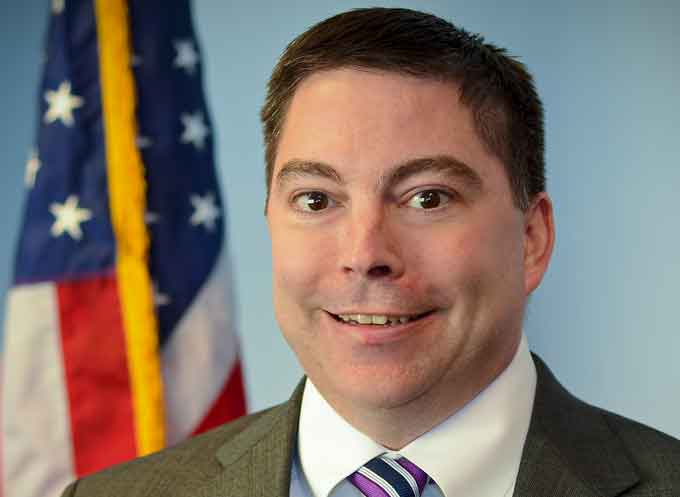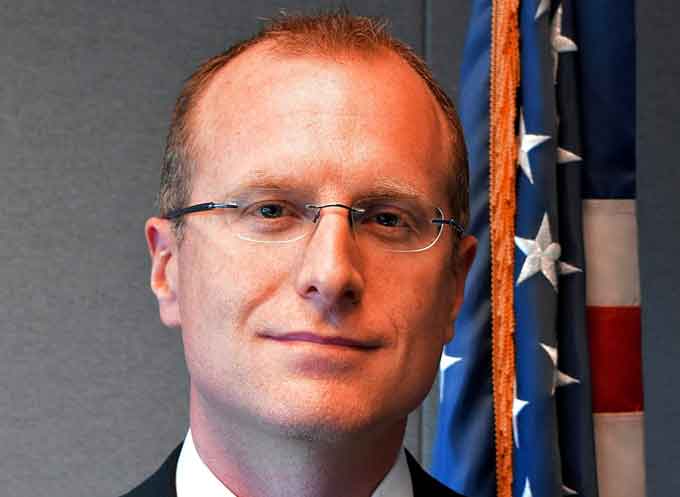The Federal Communications Commission (FCC) has adopted a Notice of Proposed Rulemaking (NPRM) effective immediately to consider updating the framework for licensing Educational Broadband Service (EBS) spectrum in the 2.5 GHz band.
An NPRM is a public notice issued by law when one of the independent agencies of the United States government wishes to add, remove, or change a rule or regulation as part of the rulemaking process.
2.5 GHz band
The 2.5 GHz band (2496-2690 MHz) constitutes the single largest band of contiguous spectrum below 3 gigahertz and is prime spectrum for next generation mobile operations, including 5G.
The NPRM proposes to modernize and rationalize the EBS spectrum in the 2.5 GHz band to allow more flexible use.
The item proposes to rationalize the service areas of existing EBS licenses and to provide additional flexibility to current and future EBS licensees.
“Currently, a large portion of the 2.5 GHz band in approximately half of the United States lies fallow,” explained FCC Chairman Ajit Pai.

“And it’s been that way for more than 20 years. This must change. “
“We need to get this valuable spectrum into the hands of those who will provide service, including 5G, to Americans across the country, particularly in rural areas where the spectrum is currently mostly unused.”
“So today, we take the first step toward putting that asset to work.”
“We’re thinking openly and broadly as we look at licenses in the 2.5 GHz band’s Educational Broadcasting Service, or EBS.”
“One example: we ask about giving existing EBS licensees, along with other educational entities and Tribal communities, the chance to obtain new priority licenses and then auctioning off the remaining white spaces.
“We also propose to give current users more flexibility, such as by standardizing license areas and eliminating outdated restrictions on lease terms and how the spectrum is used.”
(FCC Chairman Ajit Pai discusses the need to update FCC rules in order to promote the infrastructure needed for next-generation networks. Courtesy of the FCC and YouTube. Posted on Mar 21, 2018)
The NPRM also seeks comment on whether to establish up to three local priority filing windows to allow applicants physically located in a license area to access 2.5 GHz spectrum:
- First, a window for existing licensees to expand their service to the county boundaries
- Second, a window for Tribal Nations located in rural areas to acquire licenses, and
- Third, a window for educational entities that do not currently hold EBS licenses to acquire licenses
The NPRM proposes to make any spectrum remaining after these priority windows available for commercial use through competitive bidding and seeks comment on alternative approaches to the priority filing windows for licensing the spectrum for commercial use.
(Learn More. In this video, presented in American Sign Language, the FCC describes the process of the broadcast television transition as a result of the incentive auction, its potential impacts to consumers, and what consumers can do to minimize disruption to their broadcast television service. Courtesy of the FCC and YouTube. Posted on Apr 18, 2018)
The ideas teed up in the NPRM seek to allow more efficient and effective use of this spectrum band and to provide new opportunities for EBS eligible entities, rural Tribal Nations, and commercial entities to obtain unused 2.5 GHz spectrum to facilitate improved access to next generation wireless broadband, including 5G.
“Today, the Commission initiates another proceeding to ensure that the nation’s spectrum is put to its most efficient use,” explained Michael O’Rielly, a commissioner of the U.S. Federal Communications Commission.
“And, there are few bands that are more in need of such a review than the Educational Broadband Service, or EBS, band.”
“What started out in the early 1980s as an opportunity for educational institutions to provide instructional materials, while leasing some unused spectrum, has morphed over time into something quite different – a broadband play for commercial wireless providers.”
“In fact, by permitting educational organizations to lease their excess capacity to commercial wireless providers, of the approximate 2,190 active EBS licenses today, it is estimated that 2,000 of those licenses are leased in most part to commercial providers.”

“While this is not necessarily problematic, we should stop pretending that this issue is about interactive school television channels or other educational purposes.”
“New approaches to the 2.5 GHz band are also needed because its current licensing paradigm, along with a history of freezes, has led to significant underuse of this spectrum nationwide.”
“Therefore, I applaud the Chairman for bringing this notice forth.”
“At the same time, I am troubled about the possibility of repeating past spectrum policy mistakes by creating new local priority filing windows for preferred entities.”
“It is one thing to allow long-standing incumbents greater flexibility to put their spectrum to better use or participate in the secondary market, it is quite another to issue new licenses for free or on the cheap, which then – consistent with EBS tradition – could be immediately leased or flipped to commercial providers.”
“Why would we enrich such middlemen? Why would we continue the EBS charade and would doing so even be consistent with the law?”
“While I would have preferred that we not go down this path, I appreciate the Chairman’s willingness to accept edits to inquire about the downsides of these filing windows and to seek broader comment, as requested by me and Commissioner Carr, on new ways to auction and license this band for commercial use.”
“Let’s figure out what to do with the incumbents, auction the rest, and put this band in the best position for future success. I look forward to engaging with all stakeholders about how to make this a reality.”
(Learn More. The FCC considered items on an Enforcement Bureau Action, Transforming the 2.5 GHz Band, FM Translator Interference Rules and Broadcast License Posting Rules. Courtesy of the FCC and YouTube. Posted on May 10, 2018)
Historical Perspective
“In 1963, the FCC designated the 2.5 GHz band for the Instructional Television Fixed Service, or ITFS,” explained Commissioner Brendan Carr.
“In that pre-broadband age, the idea was that schools could broadcast educational video from one antenna to multiple schools, and those institutions in turn could distribute the video to classrooms through closed-circuit television.”

“Two decades later, nearly half of all states had zero ITFS licensees, even though we were essentially giving away licenses for free. Many educational institutions simply didn’t have the resources or technical knowledge to use the spectrum.”
“So in the 1980s the FCC tried to determine the band’s best use again—it allowed educational institutions to lease excess capacity to commercial broadcasters.”
“Pay-TV operators used the spectrum for a few years with limited success. The FCC’s predictive judgment once again failed to produce an optimal result and use of the band declined.”
“In the mid-2000s, the FCC took yet another shot at re-designating the spectrum—this time for mobile broadband, which we named the Educational Broadband Service, or EBS.”
“EBS was a half-step towards liberalizing the band’s use. We allowed educational institutions to lease the spectrum to entities that specialize in mobile broadband, such as wireless providers.”
“But we kept requirements that limited the band’s value and made little sense given trends in technology. For example, to this day, we require that licensees use each of the four channels of spectrum for educational purposes for 20 hours per week.”
“That might have made sense when the 2.5 GHz band was used for TV, but what does the 20-hour mandate mean when the spectrum is being used for broadband?”
“And so, predictably, we continue to see mixed results today. The 2.5 GHz band lies fallow in about half of the country. And we estimate that more than 90 percent of the EBS licenses held by educational institutions are leased to other entities.”
“On the upside, this demonstrates that there’s a market for the spectrum among wireless providers. And it shows that many educational institutions have contracted with those providers so that each can focus on what it does best: the former can educate students, and the latter can build wireless networks.”
“But it also shows that the overwhelming majority of EBS spectrum is not being used for educational broadband.”
“Instead, because of the Commission’s outdated or incorrect judgments about the band’s best use, schools and wireless providers have had to devote a lot of resources to work around our rules.”
“There are many ways to advance our public policy goal of expanding network access in schools and enhancing online learning opportunities, including through our E-rate program.”
“But, as the tortured history of the 2.5 GHz band shows, command and control set-asides and restrictions on spectrum use are not the most effective way to serve students.
“Through this Notice, the Commission begins to step away from central planning and towards letting the market determine the band’s highest and best use. It builds on our modern approach to spectrum policy, which favors flexible use, rather than the FCC dictating eligibility and use cases.”
“For the first time, we propose to allow the full transfer of EBS licenses from educational institutions to providers, benefiting both parties.”
“We propose to get rid of lease restrictions that devalue the band. And we seek to reform the geographic boundaries of licenses to encourage the full use of the spectrum.”
“I am glad to see that we are also going beyond the Notice’s original proposals and priority filing windows. We now seek comment on additional options for rationalizing our approach to the band.”
(Learn More. The FCC is pursuing a comprehensive wireless strategy to ensure that the U.S. will lead the world in the deployment of next-generation wireless technologies. FCC Chairman Ajit Pai discusses how the United States is moving swiftly to lead the world in the next generation of wireless connectivity—or 5G. These new networks and technologies will enable faster speeds and low-latency wireless broadband services, cultivating the Internet of Things and innovations not yet imagined. Courtesy of the FCC and YouTube. Posted on Apr 18, 2018)
“For example, the Notice now asks whether we should consider an incentive auction or other mechanisms to allow the market to determine the band’s highest and best use.”
“After all, this band represents a potentially large, contiguous block of spectrum below 3 GHz that could be used for next generation mobile operations, including 5G.”
“So we should recognize the significant investments that have already been made in the band while looking to remove regulatory barriers to expanding deployments.
“I want to thank my colleagues for agreeing to add this new section to the item. I look forward to reviewing the record as it develops.”
“And I want to thank the staff of the Wireless Telecommunications Bureau for their work on this item. It has my support.”
Amendment of Parts 2, 21, 74 and 94 of the Commission’s Rules and Regulations in regard to Frequency Allocation to the Instructional Television Fixed Service, the Multipoint Distribution Service, and the Private Operational Fixed Microwave Service, Gen Docket No. 80-112, CC Docket No. 80-116, Report and Order, 94 FCC 2d 1203, 1204 ¶ 4 (1983) (permitting licensees of the Instructional Television Fixed Service, or ITFS, which is the precursor to EBS and was established in 1963, the ability to lease of excess capacity).

















